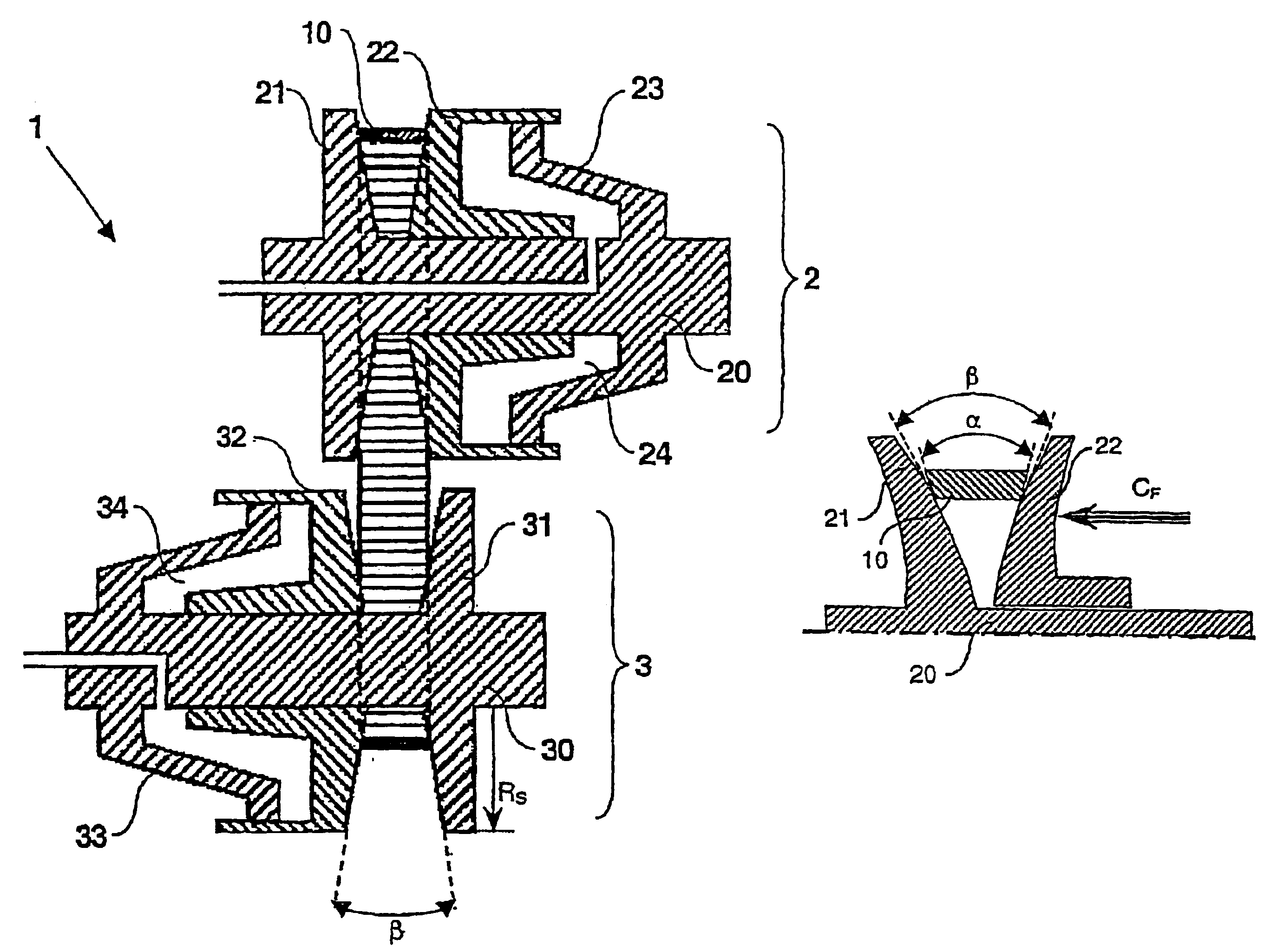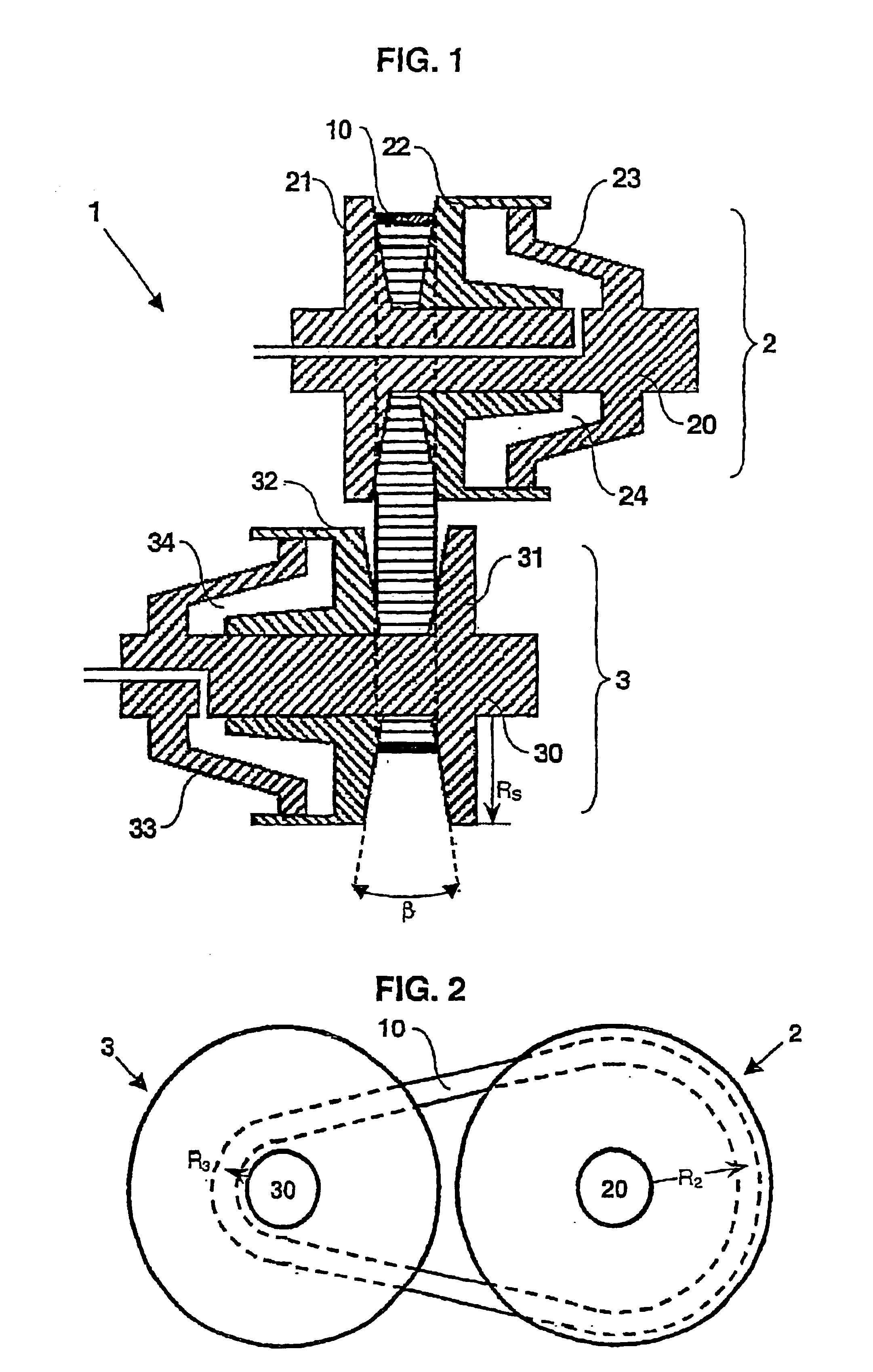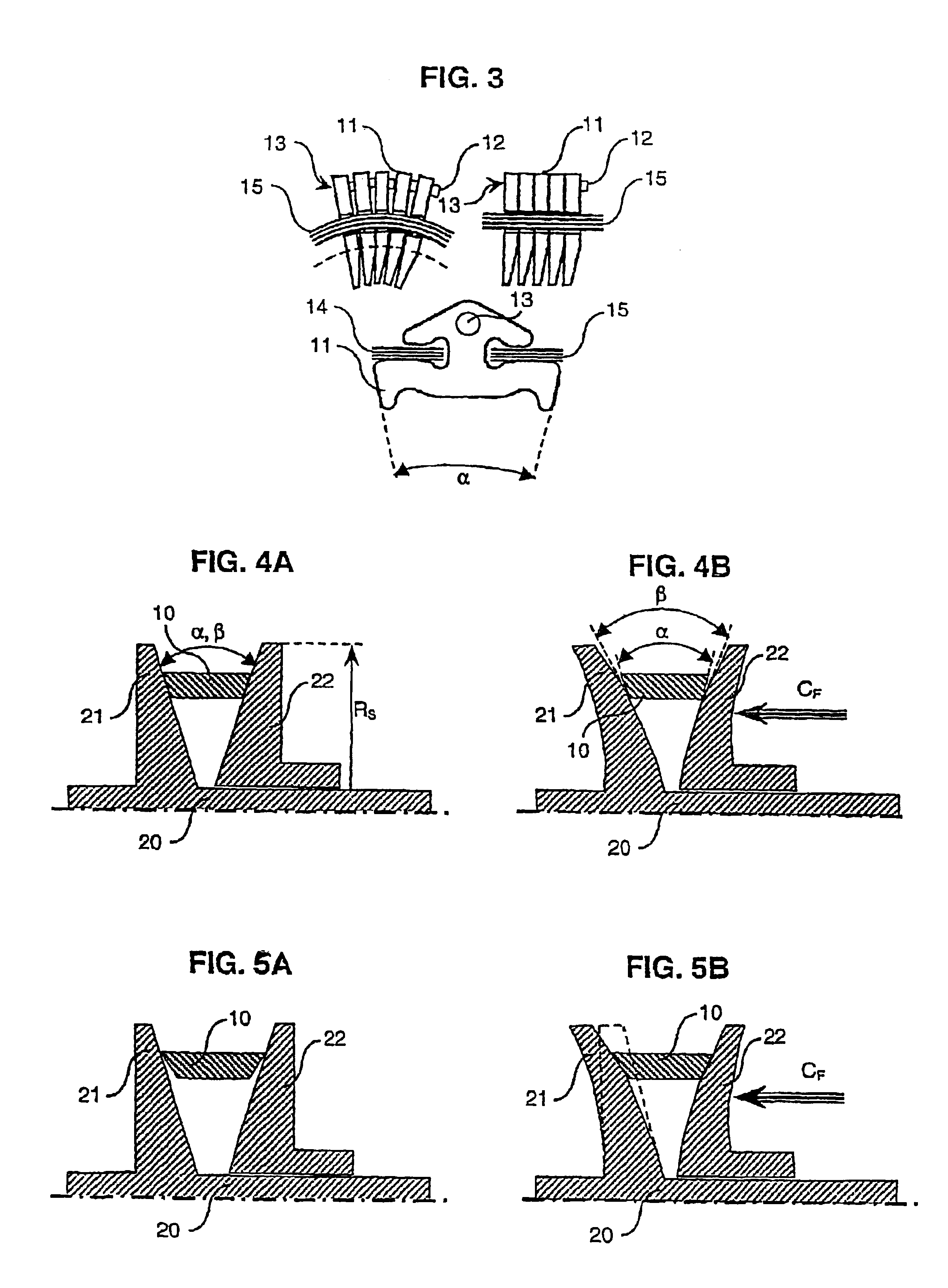Continuously variable transmission, endless flexible belt for torque transmission and adjustable pulley
- Summary
- Abstract
- Description
- Claims
- Application Information
AI Technical Summary
Benefits of technology
Problems solved by technology
Method used
Image
Examples
Embodiment Construction
[0028]In FIG. 1 a CVT 1 according to the known art is shown. The CVT 1 comprises an input pulley 2 and an output pulley 3, each pulley 2; 3 comprising a set of two frusto-conical sheaves 21, 22; 31, 32 provided on an input pulley shaft 20 and on an output pulley shaft 30 respectively, and a flexible belt 10. The sheaves have a radial dimension RS. The sheaves 21, 22; 31, 32 of a pulley 2; 3 may be urged towards each other under the influence of a hydraulic pressure exerted in a piston / cylinder assembly 23, 24; 33, 34 associated with the respective pulley 2; 3. As a result thereof, a clamping force CF is effected between the flexible belt 10 and the pulley sheaves 21, 22; 31, 32, of each of the pulleys, so that torque may be transmitted between said pulley 2; 3 by the belt 10 through friction.
[0029]Each sheave 21, 22, 31, 32 has a sheave face, whereby the sheave faces of a pulley 2; 3 are mutually oriented at a pulley angle β, as indicated in FIG. 1, such that they define an essentia...
PUM
 Login to View More
Login to View More Abstract
Description
Claims
Application Information
 Login to View More
Login to View More - R&D
- Intellectual Property
- Life Sciences
- Materials
- Tech Scout
- Unparalleled Data Quality
- Higher Quality Content
- 60% Fewer Hallucinations
Browse by: Latest US Patents, China's latest patents, Technical Efficacy Thesaurus, Application Domain, Technology Topic, Popular Technical Reports.
© 2025 PatSnap. All rights reserved.Legal|Privacy policy|Modern Slavery Act Transparency Statement|Sitemap|About US| Contact US: help@patsnap.com



